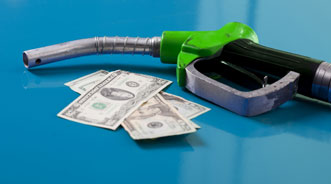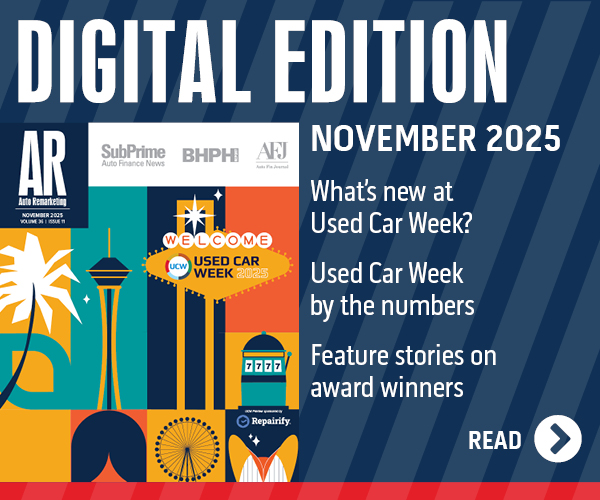Further Increase in Gas Costs Likely to Strongly Impact Used Prices

By subscribing, you agree to receive communications from Auto Remarketing and our partners in accordance with our Privacy Policy. We may share your information with select partners and sponsors who may contact you about their products and services. You may unsubscribe at any time.
IRVINE, Calif. –
The national gas price average had climbed to nearly $3.65 a gallon late last week, and it is believed that a few more coins at the pump may have a significant impact on used-vehicle prices.
AAA’s Daily Fuel Gage Report released early Friday morning had the national average for regular gasoline at $3.647. According to Kelley Blue Book, should the average gas price hit $4 – as many fear it might – the used market is likely to see some big changes when it comes to pricing.
“Given the limited supply, used cars tend to be more volatile when fuel prices increase aggressively, especially values of fuel-efficient compacts and hybrids,” explained KBB, which noted fuel costs of $3.59/gallon on Thursday.
There were more than 20-percent gains in the used prices of gas-friendly rides during the fuel-cost hikes of 2008 and 2011, analysts noted. They also pointed out that the used price surge then calmed as gas prices slowed.
“If fuel prices surpass $4.00 per gallon again, Kelley Blue Book would expect to see similar gains this year. Therefore, consumers seeking a used compact to combat rising fuel prices are advised to act quickly,” the firm suggested.
“Values have been relatively stable so far this year but as fuel prices continue to climb, it is only a matter of time before values begin to pick up steam,” analysts added.
Subscribe to Auto Remarketing to stay informed and stay ahead.
By subscribing, you agree to receive communications from Auto Remarketing and our partners in accordance with our Privacy Policy. We may share your information with select partners and sponsors who may contact you about their products and services. You may unsubscribe at any time.
New Breaking Point
Likewise, high fuel costs appear to be impacting things on the new-car side, as well.
For example, with fuel costs skyrocketing in recent years, it appears to have changed the mindset of consumers, according to analysis from CNW Research.
It used to be that $3 per gallon gas would be enough to tip consumers over the edge into new driving and car-buying habits, CNW indicated. Now, however, consumers have a new threshold of pain, so to speak.
“As prices stabilized and edged upward in small increments, consumers were able to fit the higher fuel bills into their budget, adjusting driving habits, use of cars in the family fleet and generally shifting transportation activity,” CNW president Art Spinella said of the days of the $3 per gallon being the tipping point.
“But the latest national survey of consumers shows that the new ‘wall’ — when consumers will begin significant changes in their driving and buying habits — is $4.50,” he continued. “Toss in the possibility of $5 per gallon gasoline, and the hybrid (and presumably electric) vehicle markets should explode.”
In fact, if gas prices get to $4.50 per gallon, almost 99 percent of new-vehicle intenders planning on waiting a year or more to buy said they would eventually purchase a more fuel-friendly ride, according to CNW’s study.
What’s more, 87.5 percent of intenders planning to buy in six months or less said they would purchase a more fuel-efficient ride immediately.
Additionally, with $4.50 fuel costs, hybrid consideration would climb to nearly 93 percent among new-car intenders planning to buy within a year.
“To show just how the world has changed, in April 2006, with gas prices at $2.75 per gallon, about 45 percent of new-car intenders said they’d consider a hybrid if gas reached $3.75,” Spinella indicated.
Fuel Impacts Already Surfacing
While it appears highly likely that further increases in fuel costs will dramatically impact consumer behavior, some of these effects are already taking place.
TrueCar.com projects that, spurred by the gas-price hike, February will mark an 11-month high for the combined share of small and subcompact cars (22 percent). This would represent more than a 4-percentage-point gain from the fourth quarter.
Expectations are for sales of the majority of these vehicles to climb 20 percent from February 2011. The overall industry is only projected to increase 9.6 percent for new-vehicle sales. In fact, the bulk of fuel-friendly models are notching the best sales they’ve had in the last year.
Likewise, KBB sees subcompacts, in particular, besting everything else this month, as gas have run upwards.
Specifically, KBB is calling for subcompact new-vehicle sales to climb 29.3 percent, versus the projected 6.3 percent hike for the overall new-car market.
“Although traditionally viewed as a budget segment reserved for those consumers willing to accept fewer amenities, cheaper materials and less than an awe-inspiring driving experience, today’s subcompacts compare favorably to many compacts or midsize sedans,” stated Alec Gutierrez, senior market analyst of automotive insights at KBB.
“The Nissan Versa, Chevrolet Sonic, Ford Fiesta, Hyundai Accent, Honda Fit and Toyota Yaris all are excellent examples of either all-new or redesigned products that many consumers would be happy to call their own. Each of these vehicles offers 40 mpg or more on the highway and would make an excellent choice for anyone looking to save a few bucks at the pump,” he added.
KBB went on to note that the midsize segment had hearty sales in January and may be a “segment to watch” as some redesigns among key players launch throughout 2012.
Right now, these fuel-friendly cars may be in good supply, but as sales crank up, expect inventory to drop, TrueCar says.
"There is a relatively healthy supply of fuel-efficient vehicles on dealership lots at this time, so consumers who opt for a more fuel-efficient vehicle should be able snag one without a hitch," said TrueCar senior analyst Kristen Andersson.
“As we head into summer, consumers could face a bigger obstacle in trying to find the exact vehicle they want as the most popular gas-sipping vehicles could dwindle,” she added.
Could Impact Actually Be Minimal?
Offering a different perspective, Edmunds.com chief economist Lacey Place said the aftermath of this year’s gas-price run-up likely will be different than in previous years, based on economic and international political factors.
“This is not 2008, or even 2011. A stronger economy and a higher baseline for gas prices mean that consumers are in a better position to adjust to rising fuel costs,” Plache explained.
“A permanent shock to the economy is also unlikely since higher prices will trigger the release of additional supply, and Middle Eastern countries — including Iran — know that it’s really not in their best interests to cut their oil exports,” she added.
In a separate analysis about whether hybrids or electric vehicles will actually catch on with consumers, Place shared some more color about supposed misconceptions on the impact of fuel costs.
In fact, she suggests that $8-$10/gallon is the minimum range at which fuel economy is a prime motivator in the purchasing process.
“Gas prices can be hard to predict, given the political factors that affect the price of oil. Some analysts believe that gas prices will have to increase, given growing demand from emerging markets and the expected inflationary effect of the current practice by many government of printing money to spur growth,” Plache wrote in this blog.
She went on to note that, based on government projections, fuel costs should actually be steady this year and next, before steadily climbing to $4.47/gallon in 2020. Plache stressed that taking inflation into account, this translates to $3.76/gallon.
“Such slow increases tend to support slower increases in demand for advanced-drive vehicles as well,” she noted.
“In fact, Edmunds.com analysis of consumer buying habits has shown that gas prices will need to reach at least $8 to $10 per gallon before fuel economy becomes a top factor in automobile purchases. Also, the supply of oil is not fixed as recent discoveries in the U.S. and elsewhere have proven,” Place continued.
“Forecasts of rising global demand for fuel could spur further discoveries, thereby driving gas prices (and demand for advanced-drive vehicles) downward. Barring unexpected events, gas prices are unlikely to provide a strong or consistent motivator for consumers to buy advanced-drive vehicles,” she stated.
Editor’s Note: This is the second part of a mini-series from Auto Remarketing looking at sales projections, gas prices and inventory. To read the first story, visit here. Stay tuned for Auto Remarketing’s report on inventory and production.


